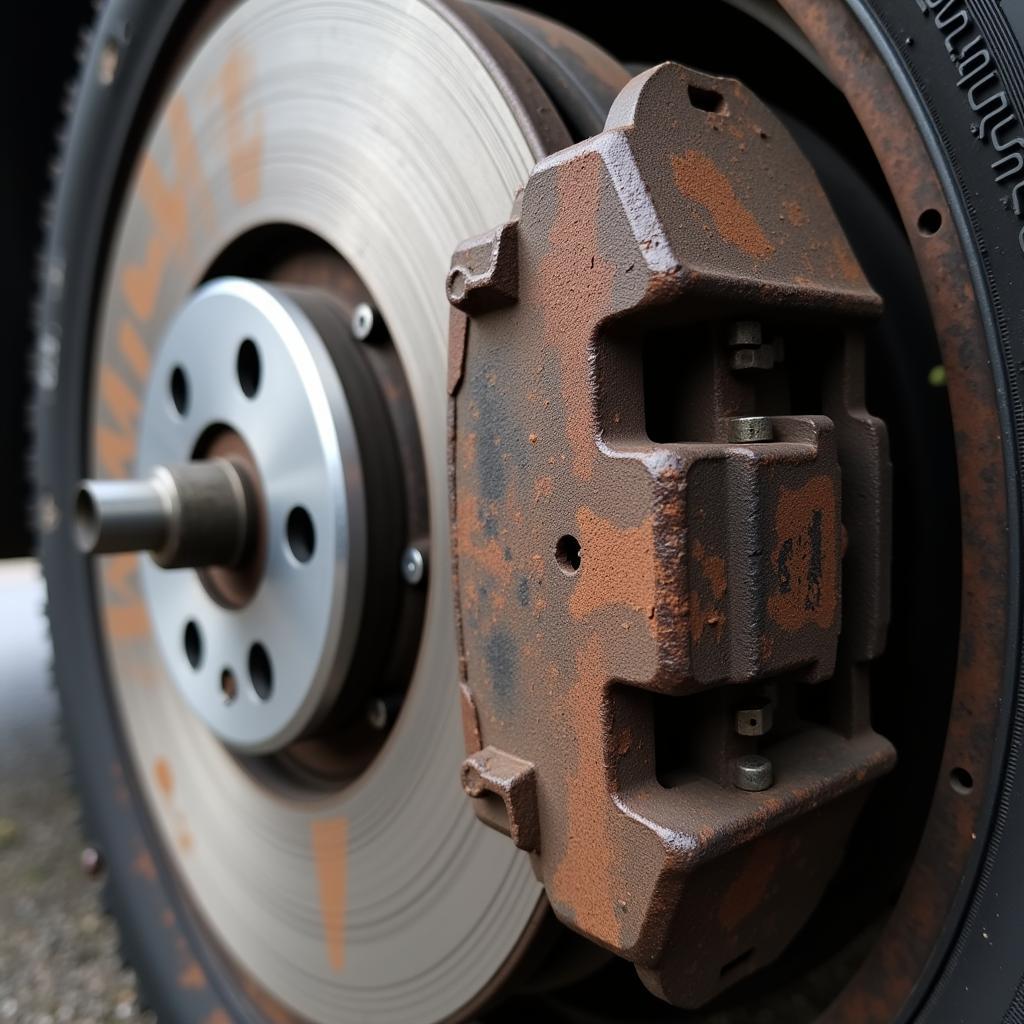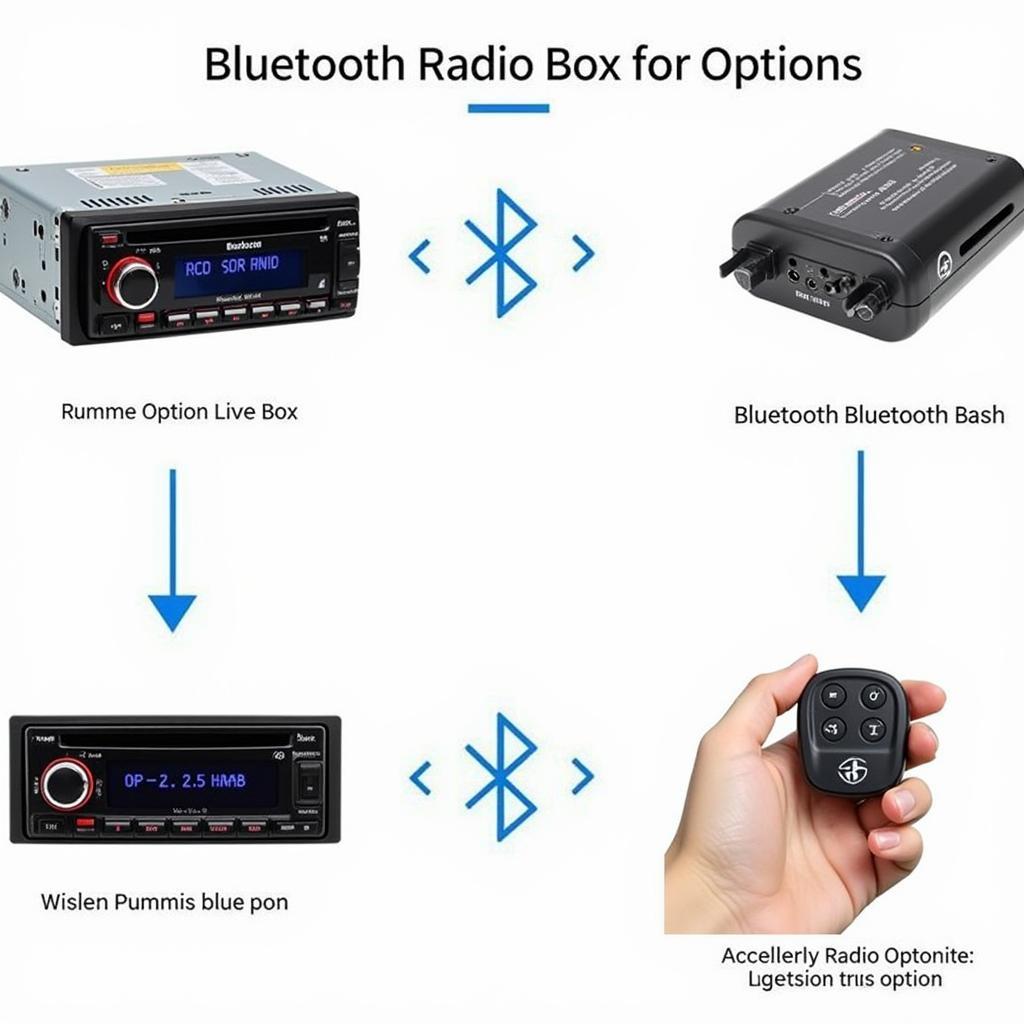A flashing or persistent brake warning light can be unnerving. This article provides a comprehensive guide on how to turn off brake warning lights, covering various causes and solutions, from simple checks to more advanced diagnostic techniques.
Understanding why your brake warning light is on is the first step to turning it off. Common causes include low brake fluid, worn brake pads, a faulty parking brake switch, or issues with the ABS system. Sometimes, the light might even be triggered by a loose sensor wire. Learning how to turn off brake warning light on bmw can be quite different than a Ford, for instance.
Common Causes and Solutions for Brake Warning Lights
Checking Brake Fluid Levels
The most common culprit for a brake warning light is low brake fluid. Park your car on a level surface and locate the brake fluid reservoir. Check the fluid level against the minimum and maximum markers. If it’s low, carefully add the correct type of brake fluid, but don’t overfill. If topping off the fluid solves the problem, great! But if the light persists, further investigation is needed.
What if you’ve recently topped up the brake fluid, but the light is still on? This suggests a leak in the brake system, a potentially serious issue. You should seek professional help immediately.
Inspecting Brake Pads
Worn brake pads can also trigger the brake warning light. Most modern vehicles have wear sensors embedded in the brake pads. When the pads wear down to a certain point, these sensors contact the rotor, activating the warning light. Inspect your brake pads for wear. If they appear thin or you hear a grinding noise when braking, it’s time for a replacement.
 Worn Brake Pads and Rotor
Worn Brake Pads and Rotor
Addressing Parking Brake Issues
Sometimes, a faulty parking brake switch or a parking brake that isn’t fully released can cause the brake warning light to illuminate. Make sure your parking brake is completely disengaged. If the light remains on, the switch might be faulty and need replacement.
Advanced Diagnostics and Troubleshooting
ABS System Malfunctions
A malfunctioning Anti-lock Braking System (ABS) can also trigger the brake warning light. Diagnosing ABS issues often requires specialized diagnostic tools. Connecting a scan tool can retrieve specific trouble codes related to the ABS system, pinpointing the problem area. If you’re not familiar with using such tools, it’s best to consult a qualified technician.
Electrical Issues and Sensor Problems
Occasionally, a loose or damaged wire connected to a brake system sensor can trigger the warning light. Inspect the wiring around the brake fluid reservoir, master cylinder, and wheel speed sensors for any signs of damage or loose connections. Repairing or replacing damaged wiring can sometimes resolve the issue. For example, understanding [how to turn off brake warning light on ford transit](https://cardiagtech.shop/how to-turn-off-brake-warning-light-on-ford-transit/) often involves checking the wiring harness specifically designed for that model.
John Smith, a certified automotive technician with over 20 years of experience, advises, “Don’t ignore a persistent brake warning light. It’s a crucial safety indicator. A timely diagnosis can prevent potentially serious brake problems.”
Conclusion
Addressing a brake warning light promptly is vital for safety. While some causes are simple to fix, others require professional attention. Don’t hesitate to seek expert help if you’re unsure about how to turn off brake warning light. Remember, properly functioning brakes are crucial for your safety and the safety of others on the road. If you’re dealing with a Mini, checking resources like how to turn off brake warning light on mini one or how to turn off brake warning light on mini cooper can provide model-specific guidance. For Transit owners, how to turn off brake warning light on transit can offer targeted solutions.
FAQ:
-
What does the brake warning light mean?
A brake warning light indicates a potential problem with your braking system. -
Is it safe to drive with the brake warning light on?
No, it’s not recommended. It could indicate a serious safety issue. -
How do I check my brake fluid level?
Locate the brake fluid reservoir under the hood and check the fluid level against the markings. -
How often should I replace my brake pads?
Brake pad lifespan varies, but it’s generally recommended to check them every 12,000 miles. -
What should I do if my brake warning light stays on after adding brake fluid?
This suggests a leak and requires immediate professional attention. -
Can I reset the brake warning light myself?
While sometimes possible, it’s best to address the underlying issue first. -
How much does it cost to fix a brake warning light issue?
The cost varies depending on the cause, ranging from a simple fluid top-up to more extensive repairs.


